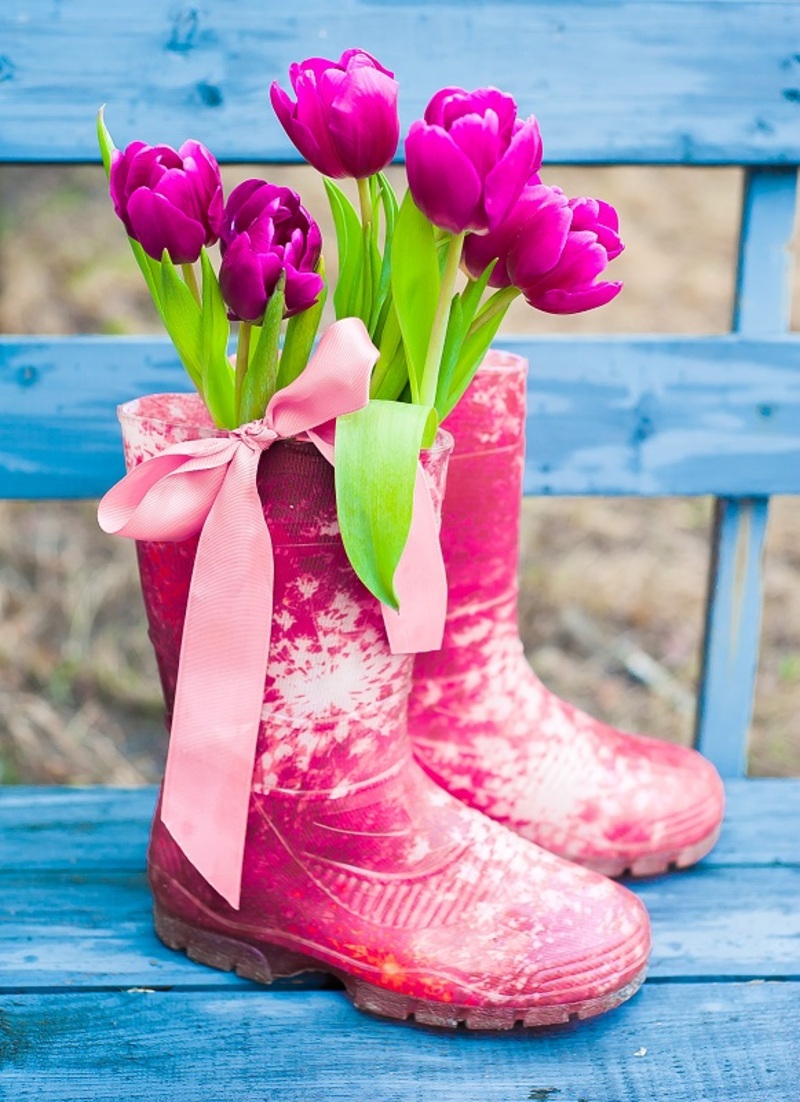Maximize Lifespan of Poinsettias with Careful Tactics
Posted on 17/08/2025
Maximize Lifespan of Poinsettias with Careful Tactics
Poinsettias are iconic holiday plants, celebrated for their vibrant red, pink, or white bracts that brighten homes during the festive season. However, many people mistakenly treat them as disposable decorations, discarding them when winter ends. In reality, with proper attention and careful tactics, you can maximize the lifespan of poinsettias and enjoy their beauty and color all year long. Understanding the right poinsettia care techniques ensures your plant flourishes far beyond the holiday season. This comprehensive guide covers everything you need to know about keeping poinsettias healthy, vigorous, and attractive for years.
Understanding Poinsettias: More Than a Holiday Plant
Poinsettias (Euphorbia pulcherrima) are native to Mexico and Central America, where they grow as woody perennials in warm, semi-tropical climates. In their natural habitat, they can reach heights of up to 10 feet! The bright, colorful "flowers" are actually bracts--modified leaves--that surround the plant's small, yellow, true flowers called cyathia. The vibrant shades we admire are a result of careful breeding and cultivation.
- Color Varieties: Red, white, pink, marbled, or speckled bracts
- Symbolism: Widely considered a symbol of joy and celebration, especially during Christmas
- Longevity: With the right tactics, poinsettias can thrive for many seasons, not just weeks
Knowing the basic biology and origins of the poinsettia empowers you to enact the best poinsettia lifespan extension strategies at home.

Essential Tactics to Prolong Poinsettia Lifespan
One of the secrets to maximizing poinsettia lifespan is to treat the plant as a living being rather than a disposable object. Below, we delve into proven practices and expert approaches that will help you nurture your poinsettias effectively.
1. Choose a Healthy Poinsettia
Success begins at the point of purchase. Select robust, healthy plants for a better chance of long-term success.
- Look for deeply colored, vibrant bracts with no discoloration.
- Check leaves for signs of yellowing, wilting, or dropping.
- Inspect the soil: it should be moist but not soggy (avoid plants sitting in water).
- Ensure the actual flowers (cyathia) are small and greenish yellow, not dropping off.
2. Provide Proper Light
Poinsettias crave bright, indirect sunlight. Place them near a window with filtered light for at least 6 hours per day. Direct sunlight may scorch their delicate bracts or leaves, while too little light will stunt their growth and cause leaf drop.
- East- or west-facing windows are ideal locations.
- Rotate the plant every few days to encourage even growth and balanced leaf color.
3. Maintain Optimal Temperature
Temperature is one of the most important factors when seeking to prolong the lifespan of poinsettias. Poinsettias are sensitive to both heat and cold.
- Ideal temperature: Keep them in a range of 65?F to 70?F (18?C to 21?C) during the day.
- Night temperatures down to 60?F (15?C) encourage bract longevity.
- Avoid drafts: Place the plant away from cold windows, doors, heating vents, and fireplaces.
- Sudden temperature swings can result in leaf drop and shortened lifespan.
4. Water Wisely
Overwatering is a leading cause of poinsettia decline. To maximize lifespan of poinsettias, follow a careful watering schedule:
- Water when the soil surface feels dry to the touch, but before it becomes bone dry.
- Apply water thoroughly, but always allow excess to drain away--never let your poinsettia sit in standing water.
- If the pot has a decorative foil wrap, remove it or puncture the bottom for drainage.
- Reduce watering frequency in late winter and spring, when the plant enters a rest period.
5. Humidity Matters
Poinsettias appreciate moderate humidity. Indoor heating during winter can dry the air, causing leaves and bracts to wither.
- Group plants together or place a tray of water nearby to increase humidity.
- Mist leaves lightly with a spray bottle if the air is particularly dry.
- Never mist the bracts directly to avoid spotting and disease.
6. Fertilization: Feed for Longevity
While your poinsettia is in full color, feeding isn't necessary. However, once the bracts fade (typically after January), monthly applications of a balanced, water-soluble fertilizer help sustain healthy growth.
- Use an all-purpose houseplant fertilizer diluted to half strength.
- Cease fertilizing as leaves begin to yellow in late autumn in preparation for dormancy.
7. Pruning and Repotting: Refreshing Your Plant
To further extend the lifespan of your poinsettia, periodic pruning and repotting are vital.
- Prune stems back to 4-6 inches after blooming to encourage bushier growth and prevent legginess.
- Repot the plant in late spring or early summer using fresh, well-draining potting soil.
Tip: Always use sterile pruning shears and clean pots to prevent the spread of disease.
Advanced Tactics for Year-Round Poinsettia Care
If you're committed to maximizing the longevity of poinsettias, follow these expert-level tactics as the plant progresses through the calendar year.
Spring Transition
- When bracts and leaves fade, cut the plant back to 6 inches high.
- Move your poinsettia to a sunny, protected outdoor spot once night temperatures remain above 50?F (10?C).
- Continue moderate watering, increasing fertilization as new growth appears.
Summer Care
- Repot if roots are crowded.
- Pinch back stems in June, July, and August to promote a compact, fuller plant and more bracts for the next season.
- Avoid exposing the plant to direct midday sunlight outdoors.
Autumn Preparation (Initiating Rebloom)
Poinsettias are photoperiodic: they require extended periods of uninterrupted darkness to initiate blooming and bract coloration.
- Starting in late September or early October, provide at least 14 hours of total darkness nightly (place a box or bag over the plant, or move it to a closet).
- Continue this regimen for 8-10 weeks, exposing the plant to bright, indirect light during the day.
- Maintain warm daytime temps, cool nights, and even moisture.
Winter Display
Once bracts have attained color, bring your poinsettia back to your main living space and enjoy another spectacular display. Continue standard care to maintain its vigor through the winter months.
Common Poinsettia Problems and Solutions
Even with the best tactics to maximize lifespan of poinsettias, issues may arise. Here's how to address frequent challenges:
- Dropped Leaves: Usually caused by sudden temperature shifts, drafts, or overwatering. Restore stable conditions and proper watering habits.
- Pale Bracts: Indicates insufficient light or old age. Relocate to a brighter spot or follow the reblooming regimen.
- Sticky Leaves: Sign of whiteflies or aphids. Rinse the plant with a gentle stream of water and treat with insecticidal soap if necessary.
- Wilting: Caused by root rot from overwatering or a pot without drainage. Let the soil dry, check roots, and repot if necessary.
Always inspect new plants for signs of disease or pests before bringing them home to safeguard other houseplants.
Safety and Toxicity: What to Know
A common myth holds that poinsettias are deadly poisonous, but in fact, they are only mildly toxic and usually cause minimal discomfort if ingested. Still, it's smart to keep plants out of reach of pets and children who might chew on leaves or bracts. Skin irritation may occur in people with latex allergies.
- Symptoms of ingestion: Mild nausea, vomiting, or mouth irritation
- Care: Rinse affected areas and contact a medical professional if needed

Frequently Asked Questions About Poinsettia Lifespan
-
How long can poinsettias last with proper care?
With strategic tactics and attentive care, poinsettias can live and rebloom for several years. -
Should I keep the foil wrapping on my poinsettia?
It's best to remove or cut drainage holes in decorative foils to allow for proper water flow. -
Can I plant my poinsettia outdoors?
In USDA zones 9-11, poinsettias can be grown outdoors year-round. In colder climates, grow them in pots and bring inside for winter. -
Why are my poinsettia's leaves turning yellow and dropping?
Most commonly, this is due to overwatering, improper light, or temperature stress. Adjust your care accordingly. -
How do I get my poinsettia to bloom again?
Follow the photoperiod regimen described above, ensuring the plant gets long, uninterrupted nights for at least 8-10 weeks in fall.
Conclusion: Your Poinsettia, Your Legacy
Poinsettias are much more than short-lived symbols of the holiday season. When you maximize the lifespan of poinsettias with careful tactics, you not only enjoy their color and vibrancy year after year, but also develop a rewarding relationship with a living plant. By focusing on selection, water, light, temperature, humidity, nutrition, and the unique seasonal needs, it's entirely possible to cultivate thriving, reblooming poinsettias that grace your home for years to come.
Try these expert care strategies and discover the satisfaction of keeping your poinsettias flourishing long after the holidays. With a bit of attention and the right know-how, your poinsettia can truly become a perennial joy.
Latest Posts
Office Plant Choices for the Time-Strapped Individual
Sunflower Marvels: 8 Facts That Might Surprise You
Harnessing the beauty of hydrangeas with proper care






